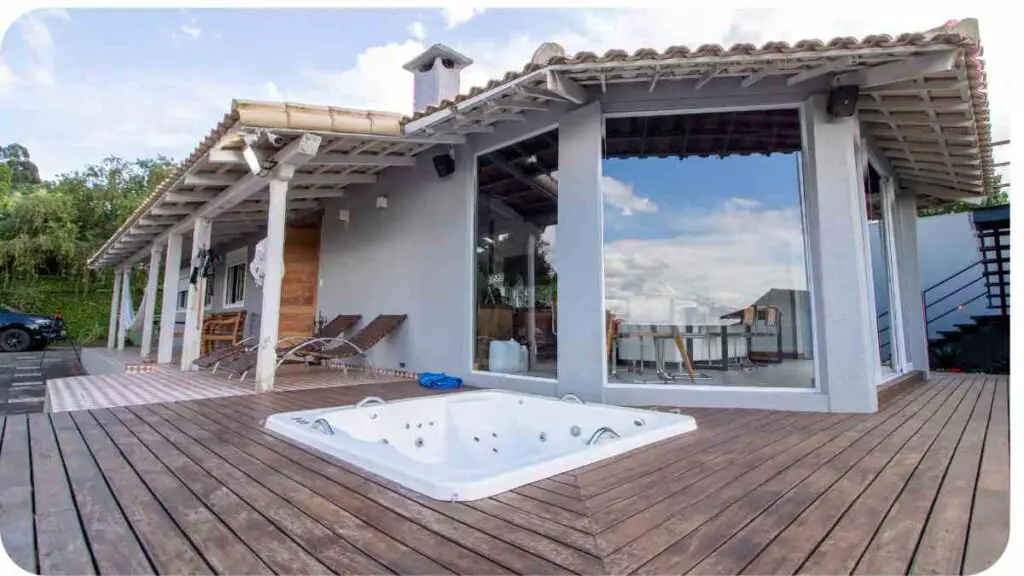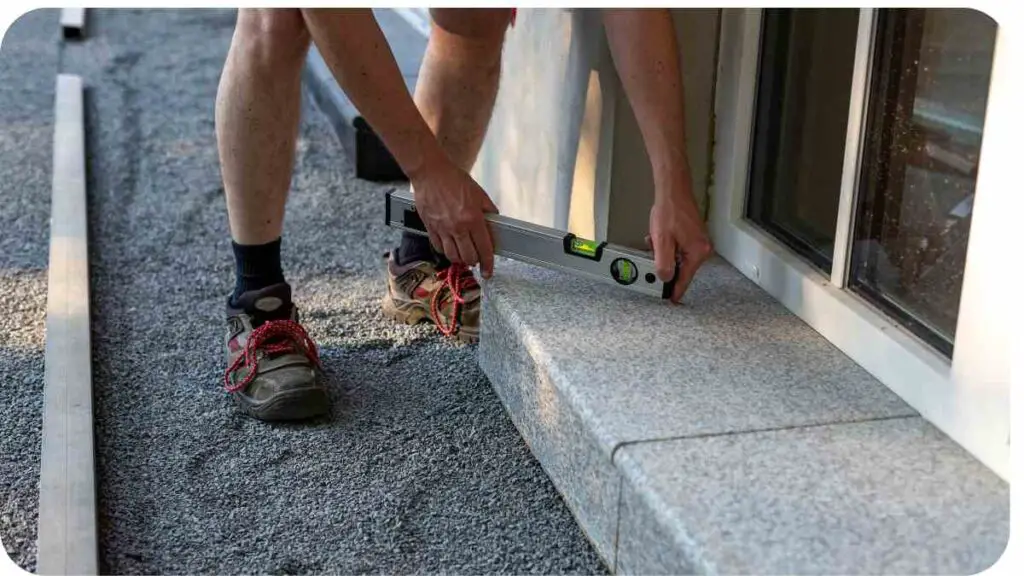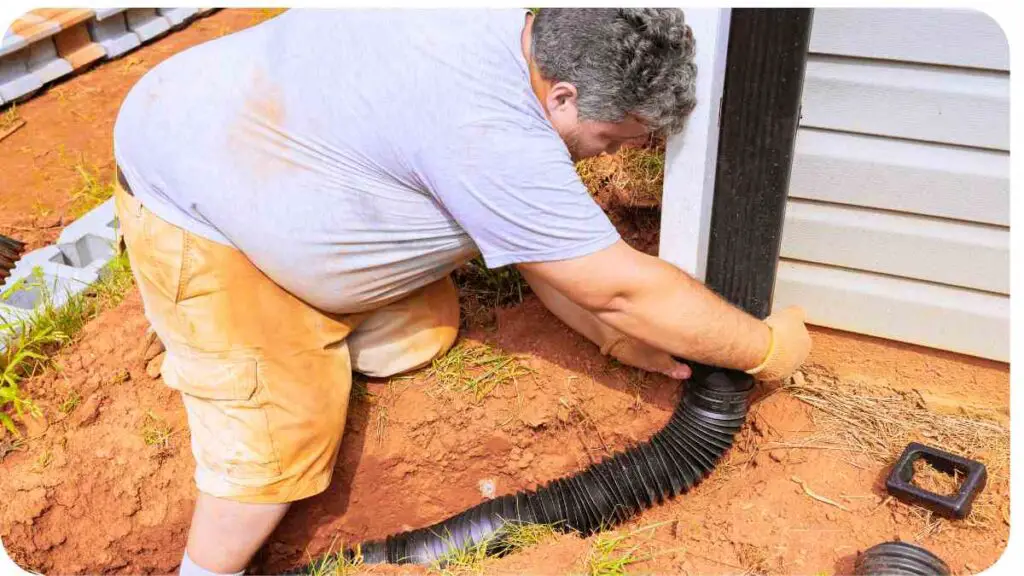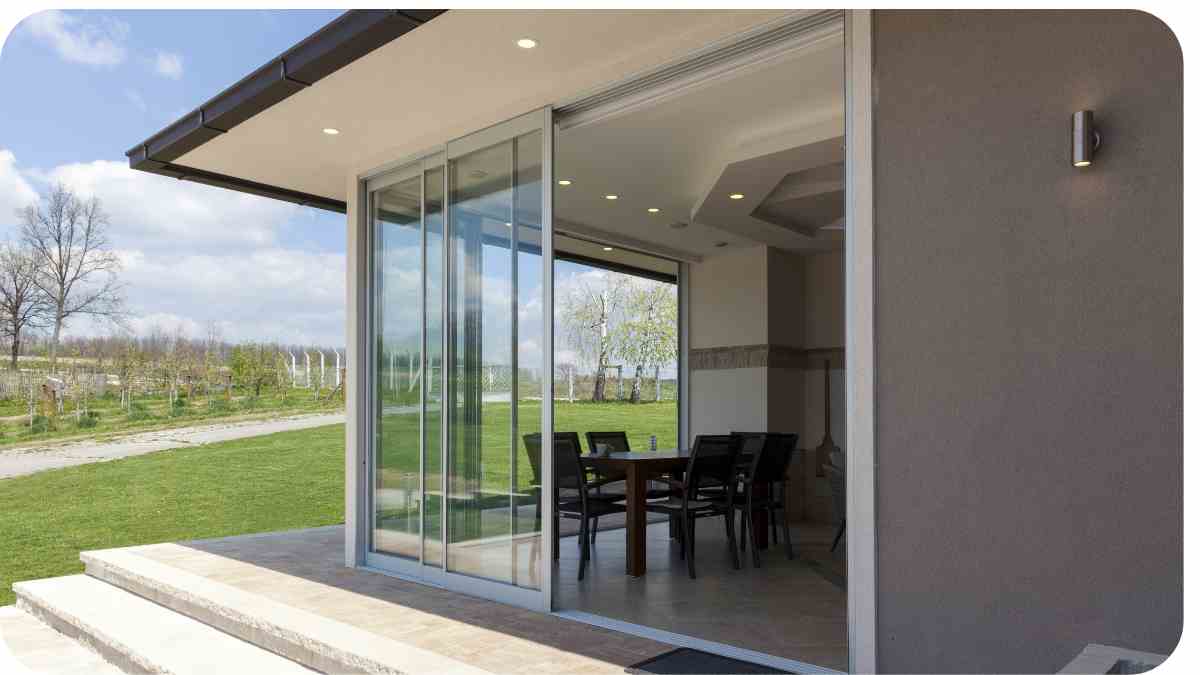Creating a backyard terrace can transform your outdoor space into a functional and beautiful area for relaxation and entertainment. Whether you’re envisioning a cozy retreat or a lively gathering spot, understanding the process of building a terrace is essential to achieving your dream outdoor space.
| Takeaways |
|---|
| 1. Plan thoroughly, considering space, terrain, and budget. |
| 2. Choose suitable materials like pavers or decking based on durability and aesthetics. |
| 3. Ensure proper drainage to prevent water damage and maintain stability. |
| 4. Incorporate functional accessories like outdoor furniture and lighting for usability. |
| 5. Regular maintenance is crucial for preserving the terrace’s condition and longevity. |
| 6. Consider sustainability practices such as using eco-friendly materials and water management. |
Benefits of Building a Backyard Terrace

Building a backyard terrace offers several advantages beyond just aesthetic appeal. It enhances your outdoor living experience by providing designated areas for dining, lounging, or gardening. Additionally, it can significantly increase the overall value of your property by expanding usable square footage and enhancing curb appeal.
Building a backyard terrace can be a rewarding project. To complete the look, consider adding a fence. For cost-effective options, learn how to build a cheap backyard fence. A well-built fence enhances privacy and defines the space beautifully.
Planning Your Backyard Terrace
Before diving into construction, careful planning is crucial. Start by assessing your backyard’s layout and terrain. Consider factors such as the slope of the land, existing vegetation, and sunlight exposure. This assessment will help you determine the optimal location and size for your terrace.
Setting a realistic budget is another essential step. Calculate costs for materials, labor (if hiring professionals), and any necessary permits. Having a clear budget from the outset will prevent unexpected expenses down the road.
Design Considerations
Choosing the right materials and style is pivotal in creating a backyard terrace that complements your home’s architecture and your personal preferences. Materials like natural stone, concrete pavers, or composite decking each offer unique benefits in terms of durability, aesthetics, and maintenance requirements. Selecting a style that harmonizes with your home’s exterior ensures a cohesive look.
After constructing your backyard terrace, you might want to host gatherings. Knowing how to set up a backyard party can transform your space into an inviting venue. From seating arrangements to lighting, thoughtful planning ensures your guests have a memorable time.
Table: Materials Comparison
| Material | Pros | Cons |
|---|---|---|
| Natural Stone | Elegant appearance, durable | Higher cost, requires sealing |
| Concrete Pavers | Affordable, versatile | Prone to shifting without proper base |
| Composite Decking | Low maintenance, modern aesthetics | Initial higher cost, may fade over time |
Preparation and Tools
Gathering the right tools and equipment before starting construction is essential for efficiency and safety. Basic tools such as shovels, wheelbarrows, and levels are necessary for site preparation and construction. Depending on your design, you may also need specialized tools like a concrete mixer or a laser level for precise measurements.
Table: Essential Tools
| Tool | Purpose |
|---|---|
| Shovel | Excavation and leveling |
| Wheelbarrow | Transporting materials |
| Level | Ensuring even surfaces |
| Concrete Mixer | Mixing concrete |
| Laser Level | Accurate measurements |
Building the Foundation
Once you’ve completed the planning and gathered your materials and tools, it’s time to start building the foundation of your backyard terrace. The foundation is crucial as it provides stability and support for the entire structure.
Complement your backyard terrace with greenery. Discover what fruit you can grow in your backyard to add both beauty and functionality. Freshly picked fruits not only taste great but also enhance the aesthetics of your outdoor space.
Types of Foundations
The type of foundation you choose depends on factors such as soil type, local climate, and the desired height of your terrace. Common options include concrete slab foundations, gravel bases, or even adjustable pedestals for elevated terraces. Each has its advantages in terms of cost, durability, and ease of installation.
Steps to Pouring Concrete
If you opt for a concrete foundation, the process involves several key steps:
- Excavation: Digging out the area to the required depth and ensuring it is level and compacted.
- Formwork: Creating wooden or metal forms to outline the shape and dimensions of the concrete slab.
- Reinforcement: Adding steel reinforcement bars (rebar) for added strength and to prevent cracking.
- Mixing and Pouring: Mixing concrete according to the manufacturer’s instructions and pouring it into the formwork.
- Finishing: Smoothing the surface with a trowel and ensuring it is level and free of imperfections.
Constructing the Terrace

With the foundation in place, you can now proceed to construct the main elements of your backyard terrace, such as retaining walls and flooring.
Building Retaining Walls
Retaining walls are essential for creating level terraces on sloping terrain. They prevent soil erosion, add visual interest, and define different areas of your outdoor space. Materials for retaining walls can range from natural stone to modular concrete blocks, depending on your design preferences and budget.
Your backyard terrace could be the perfect setting for special events. Planning how much to throw a backyard wedding helps you budget effectively. With thoughtful preparation, you can create a romantic and memorable atmosphere without breaking the bank.
Laying Pavers or Decking
The choice between laying pavers or installing decking largely depends on the desired aesthetic and maintenance considerations. Pavers are versatile and come in various shapes and colors, offering a customizable look. They are relatively easy to install and can withstand changing weather conditions. On the other hand, decking provides a more traditional or modern appearance, depending on the material chosen (e.g., wood or composite). Decking requires periodic maintenance such as sealing or staining to prolong its lifespan.
Table: Pros and Cons of Pavers vs. Decking
| Feature | Pavers | Decking |
|---|---|---|
| Appearance | Versatile designs, natural look | Warm, traditional feel |
| Maintenance | Low maintenance, replaceable if damaged | Requires staining/sealing, periodic upkeep |
| Durability | Resistant to weathering and cracking | Susceptible to rot if not maintained well |
| Installation | DIY-friendly, no curing time | Requires framing and support structures |
Installing Drainage Systems

Proper drainage is critical to prevent water buildup, which can damage your terrace and surrounding landscaping. Here’s how to ensure effective drainage for your backyard terrace:
Importance of Drainage
Effective drainage prevents water from pooling on the terrace surface, which can lead to erosion, soil instability, and even structural damage over time. It also helps to manage runoff during heavy rainstorms, reducing the risk of flooding in your outdoor space.
Methods for Effective Drainage
- French Drains: These are trenches filled with gravel or perforated pipe that redirect water away from the terrace to a designated drainage area. French drains are effective for managing water flow without compromising the terrace’s stability.
- Surface Grading: Ensuring that the terrace surface slopes slightly away from structures and towards drainage outlets helps water naturally flow away from the area.
- Permeable Pavers: Choosing permeable materials for your terrace surface allows water to infiltrate into the ground rather than pooling on the surface. This reduces runoff and helps replenish groundwater.
- Gutters and Downspouts: Installing gutters and downspouts on nearby structures directs roof runoff away from the terrace, preventing excess water accumulation.
Adding Accessories and Features
Enhance the functionality and aesthetics of your backyard terrace with carefully chosen accessories and features.
Furniture and Decor Ideas
Select outdoor furniture that suits your terrace’s style and purpose, whether it’s dining sets for al fresco meals or cozy seating arrangements for relaxation. Choose materials that withstand outdoor conditions, such as weather-resistant wicker or metal frames with UV-resistant cushions.
The right lighting can elevate your terrace’s ambiance. Learn how to light your backyard for a party to create a warm, inviting environment. Proper illumination ensures that your gatherings extend seamlessly into the evening, enhancing the overall experience.
Lighting Solutions
Extend the usability of your terrace into the evening with effective lighting solutions. Options include string lights for a festive ambiance, solar-powered path lights for safety, or integrated LED fixtures for task lighting. Consider the placement of lighting to highlight key features and pathways.
Maintenance Tips
To ensure your backyard terrace remains in top condition year-round, follow these maintenance tips:
Yearly Maintenance Checklist
- Inspect and Repair: Regularly check for cracks in pavers or decking, loose retaining wall stones, and signs of erosion around drainage areas.
- Clean Surfaces: Remove debris, leaves, and dirt from pavers or decking regularly to prevent staining and promote drainage.
- Sealants and Treatments: Apply sealants or treatments as recommended for pavers or decking materials to protect against weathering and prolong lifespan.
- Trim and Prune: Trim back overhanging branches and prune vegetation near the terrace to prevent root damage and ensure adequate sunlight and airflow.
Next, we’ll explore the cost breakdown of building a backyard terrace, including estimated costs for materials and labor considerations.
Cost Breakdown
Understanding the costs involved in building a backyard terrace is essential for budget planning and project management.
Estimated Costs for Materials
The cost of materials will vary based on the size of your terrace, chosen materials, and regional pricing. Here’s a breakdown of estimated costs for typical materials used in building a backyard terrace:
- Pavers or Decking: Depending on the material chosen (e.g., concrete pavers, natural stone, composite decking), expect to budget between $5 to $30 per square foot.
- Retaining Walls: Costs vary widely based on materials (e.g., concrete blocks, natural stone, timber), but budget approximately $15 to $40 per square foot.
- Concrete for Foundation: Estimate concrete costs at around $75 to $100 per cubic yard, including delivery and labor costs for pouring and finishing.
- Drainage Materials: Costs for French drains or gravel fill typically range from $1 to $5 per square foot, depending on depth and materials used.
Labor Costs and Considerations
Labor costs can significantly impact your overall budget, especially if you hire professionals for excavation, construction, and installation. Labor rates vary by region and contractor expertise but expect to allocate approximately 50% to 70% of your total budget for labor expenses.
Environmental Impact
Considering the environmental impact of your backyard terrace project is crucial for sustainability and long-term environmental stewardship.
Sustainable Practices
- Use of Eco-friendly Materials: Opt for recycled or sustainably sourced materials such as reclaimed wood or permeable paving stones that minimize environmental footprint.
- Water Management: Implement water-efficient landscaping practices and consider incorporating rainwater harvesting systems or permeable surfaces to reduce runoff and promote groundwater recharge.
Safety Considerations
Ensuring safety during and after construction is paramount to protect both your investment and the well-being of those using the terrace.
Ensuring Structural Integrity
- Building Codes and Permits: Obtain necessary permits and adhere to local building codes to ensure structural stability and compliance with safety regulations.
- Professional Advice: Consult with structural engineers or landscape architects to assess soil stability, drainage needs, and structural integrity before and during construction.
FAQs
Addressing common questions about building a backyard terrace helps provide clarity and guidance for readers considering a similar project.
- Can I build a terrace on sloping ground?
- Yes, terraces are ideal for sloping terrain and can be designed with retaining walls to create level spaces.
- How long does it take to build a backyard terrace?
- The timeline varies based on project complexity and size but typically ranges from a few weeks to several months, including planning and construction phases.
- What permits might be required?
- Permits may vary by location but commonly include zoning permits for construction, drainage permits, and possibly environmental permits depending on local regulations.
Further Reading
Explore additional resources and tips to enhance your knowledge and preparation for building a backyard terrace:
- Recommended Resources: Links to reputable websites, books, or articles offering detailed guides on terrace construction and landscaping.
- Additional Tips and Tricks: Insider tips from professionals in landscaping and construction to optimize your terrace project for success.
Additional Tips and Insights
Building a backyard terrace is not just about construction; it’s about creating a functional and beautiful outdoor space that enhances your lifestyle. Here are some additional tips and insights to consider:
Designing for Functionality and Aesthetics
- Blend with Landscape: Incorporate elements of your backyard’s natural landscape into the terrace design. For example, use native plants or integrate natural stone that complements existing features.
- Multi-level Design: If your backyard has significant slopes, consider creating multi-level terraces connected by steps or paths. This approach not only maximizes usable space but also adds visual interest.
Personalizing Your Terrace
- Outdoor Kitchen or BBQ Area: Integrate a cooking and dining area into your terrace design for outdoor entertaining. Consider adding built-in grills, countertops, and seating arrangements for convenience.
- Fire Pit or Fireplace: Create a cozy ambiance with a fire pit or fireplace as a focal point. Choose materials that harmonize with your terrace design and ensure proper ventilation and safety measures.
Enhancing Comfort and Accessibility
- Shade Solutions: Incorporate shade structures such as pergolas, umbrellas, or retractable awnings to provide relief from the sun during hot days. Consider planting trees or using vine-covered trellises for natural shade.
- Accessibility: Design pathways and ramps that ensure accessibility for everyone, including those with mobility challenges. Use slip-resistant materials and consider lighting pathways for nighttime use.
Long-term Sustainability
- Rainwater Management: Install rain barrels or cisterns to collect rainwater for irrigation purposes, reducing water consumption and supporting sustainable gardening practices.
- Native Plant Landscaping: Choose native plants that require less water and maintenance, promoting biodiversity and reducing the need for chemical fertilizers or pesticides.
Conclusion
Building a backyard terrace is a rewarding project that enhances your home’s outdoor living space and increases its value. By carefully planning, selecting appropriate materials, and incorporating thoughtful design elements, you can create a terrace that complements your lifestyle and brings enjoyment for years to come.
Whether you’re tackling the project yourself or hiring professionals, the key is to prioritize functionality, aesthetics, and sustainability throughout the process. With these tips and insights, you’re well-equipped to embark on your backyard terrace journey with confidence.
Further Reading
Here are some additional resources to explore for more insights on building terraces in your backyard:
- Oleo-Mac – Terraces: How to Make Them in Your Garden
- Explore practical tips and green ideas for creating terraces that enhance your garden space.
- Arka Energy – Terraced Garden
- Learn about the benefits and steps involved in creating a terraced garden to maximize your outdoor space.
- LawnStarter – How to Terrace a Garden in Your Backyard
- Discover expert landscaping advice on effectively terracing your garden to improve aesthetics and functionality.
FAQs
Can I build a terrace on uneven ground?
Yes, terraces are ideal for uneven or sloping terrain as they allow you to create level surfaces using retaining walls or steps.
What materials are best for building a terrace?
The choice of materials depends on factors such as durability, aesthetics, and budget. Common options include natural stone, concrete pavers, and composite decking.
How much does it cost to build a backyard terrace?
Costs vary based on factors like size, materials, and labor. A rough estimate ranges from $10 to $50 per square foot, including materials and installation.
Do I need a permit to build a backyard terrace?
Permit requirements vary by location and the scope of your project. Check with local authorities to determine if permits are needed for excavation, construction, or drainage.
How long does it take to build a backyard terrace?
The timeline depends on the complexity of the project and weather conditions. Typically, it can take several weeks to a few months from planning to completion.

I am Hellen James, a landscape architect. For many years I have written about landscaping for various publications; however, recently decided to focus my writing on personal experience as a profession.

